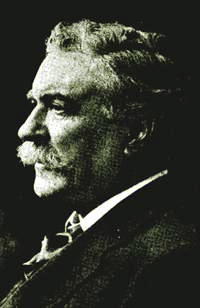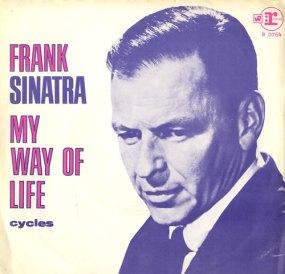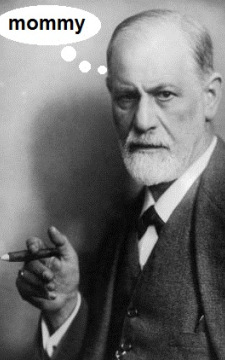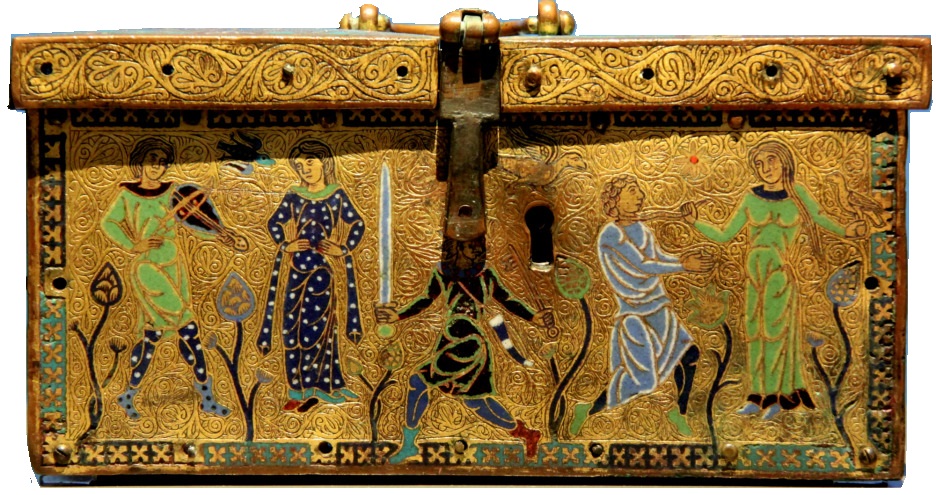The following is a chapter from Ernest Belfort Bax’ famous book ‘The Fraud of Feminism’ published in 1913.
Chapter V
The “Chivalry” Fake
It is plain then that chivalry as understood in the present day really spells sex privilege and sex favouritism pure and simple, and that any attempts to define the term on a larger basis, or to give it a colourable rationality founded on fact, are simply subterfuges, conscious or unconscious, on the part of those who put them forward. The etymology of the word chivalry is well known and obvious enough.
The term meant originally the virtues associated with knighthood considered as a whole, bravery even to the extent of reckless daring, loyalty to the chief or feudal superior, generosity to a fallen foe, general open-handedness, and open-heartedness, including, of course, the succour of the weak and the oppressed generally, inter alia, the female sex when in difficulties.
It would be idle, of course, to insist upon the historical definition of the term.
Language develops and words in course of time depart widely from their original connotation, so that etymology alone is seldom of much value in practically determining the definition of words in their application at the present day. But the fact is none the less worthy of note that only a fragment of the original connotation of the word chivalry is covered by the term as used in our time, and that even that fragment is torn from its original connection and is made to serve as a scarecrow in the field of public opinion to intimidate all who refuse to act upon, or who protest against, the privileges and immunities of the female sex. [1]
I have said that even that subsidiary element in the old original notion of chivalry which is now well-nigh the only surviving remnant of its original connotation is torn from its connection and hence has necessarily become radically changed in its meaning. From being part of a general code of manners enjoined upon a particular guild or profession it has been degraded to mean the exclusive right in one sex guaranteed by law and custom to certain advantages and exemptions without any corresponding responsibility.
Let us make no mistake about this. When the limelight of a little plain but critical common-sense is turned upon this notion of chivalry hitherto regarded as so sacrosanct, it is seen to be but a poor thing after all; and when men have acquired the habit of habitually turning the light of such criticism upon it, the accusation, so terrible in the present state of public opinion, of being “unchivalrous” will lose its terrors for them.
In the so-called ages of chivalry themselves it never meant, as it does to-day, the woman right or wrong. It never meant as it does to-day the general legal and social privilege of sex. It never meant a social defence or a legal exoneration for the bad and even the criminal woman, simply because she is a woman. It meant none of these things. All it meant was a voluntary or gratuitous personal service to the forlorn women which the members of the Knights’ guild among other such services, many of them taking precedence of this one, were supposed to perform.
So far as courage is concerned, which was perhaps the first of the chivalric virtues in the old days, it certainly requires more courage in our days to deal severely with a woman when she deserves it (as a man would be dealt with in like circumstances) than it does to back up a woman against her wicked male opponent.
It is a cheap thing, for example, in the case of a man and woman quarrelling in the street, to play out the stage rôle of the bold and gallant Englishman “who won’t see a woman maltreated and put upon, not he!” and this, of course, without any inquiry into the merits of the quarrel. To swim with the stream, to make a pretence of boldness and bravery, when all the time you know you have the backing of conventional public opinion and mob-force behind you, is the cheapest of mock heroics.
Chivalry today means the woman, right or wrong, just as patriotism today means “my country right or wrong.” In other words, chivalry today is only another name for Sentimental Feminism. Every outrageous pretension of Sentimental Feminism can be justified by the appeal to chivalry, which amounts (to use the German expression) to an appeal from Pontius to Pilate. This Sentimental Feminism commonly called chivalry is sometimes impudently dubbed by its votaries, “manliness.”
It will presumably continue in its practical effects until a sufficient minority of sensible men will have the moral courage to beard a Feminist in public opinion and shed a little of this sort of “manliness.” The plucky Welshmen at Llandystwmdwy in their dealings with the suffragette rowdies on memorable occasion showed themselves capable of doing this. In fact one good effect generally of militant suffragetteism seems to be the weakening of the notion of chivalry – i.e. in its modern sense of Sentimental Feminism – amongst the populace of this country.
The combination of Sentimental Feminism with its invocation of the old-world sentiment of chivalry which was based essentially on the assumption of the mental, moral and physical inferiority of woman to man, for its justification, with the pretensions of modern Political Feminism, is simply grotesque in its inconsistent absurdity. In this way Modern Feminism would fain achieve the feat of eating its cake and having it too. When political and economic rights are in question, bien entendu, such as involve gain and social standing, the assumption of inferiority magically disappears before the strident assertion of the dogma of the equality of woman with man – her mental and moral equality certainly!
When, however, the question is of a different character – for example, for the relieving of some vile female criminal of the penalty of her misdeeds – then Sentimental Feminism comes into play, then the whole plaidoyer is based on the chivalric sentiment of deference and consideration for poor, weak woman. I may point out that here, if it be in the least degree logical, the plea for mercy or immunity can hardly be based on any other consideration than that of an intrinsic moral weakness in view of which the offence is to be condoned.
The plea of physical weakness, if such be entertained, is here in most cases purely irrelevant. Thus, as regards the commutation of the death sentence, the question of the muscular strength or weakness of the condemned person does not come in at all. The same applies, mutatis mutandis, to many other forms of criminal punishment. But it must not be forgotten that there are two aspects of physical strength or weakness. There is, as we have already pointed out, the muscular aspect and the constitutional aspect.
If we concede the female sex as essentially and inherently weaker in muscular power and development than the male, this by no means involves the assumption that woman is constitutionally weaker than man. On the contrary, it is a known fact attested, as far as I am aware, by all physiologists, no less than by common observation, that the constitutional toughness and power of endurance of woman in general far exceeds that of man, as explained in an earlier chapter.
Be this as it may, however, the existence of this greater constitutional strength or resistant power in the female than in the male organic system – as crucially instanced by the markedly greater death-rate of boys than of girls in infancy and early childhood – should, in respect of severity of punishment, prison treatment, etc., be a strong counter-argument against the plea for leniency, or immunity in the case of female criminals, made by the advocates of Sentimental Feminism.
But these considerations afford only one more illustration of the utter irrationality of the whole movement of Sentimental Feminism identified with the notion of “chivalry.” For the rest, we may find illustrations of this galore. A very flagrant case is that infamous “rule of the sea” which came so much into prominence at the time of the Titanic disaster. According to this preposterous “chivalric” Feminism, in the case of a ship foundering, it is the unwritten law of the seas, not that the passengers shall leave the ship and be rescued in their order as they come, but that the whole female portion shall have the right of being rescued before any man is allowed to leave the ship. Now this abominable piece of sex favouritism, on the face of it, cries aloud in its irrational injustice.
Here is no question of bodily strength or weakness, either muscular or constitutional. In this respect, for the nonce, all are on a level. But it is a case of life itself. A number of poor wretches are doomed to a watery grave, simply and solely because they have not had the luck to be born of the privileged female sex.
Such is “chivalry” as understood to-day – the deprivation, the robbery from men of the most elementary personal rights in order to endow women with privileges at the expense of men. During the ages of chivalry and for long after it was not so. Law and custom then was the same for men as for women in its incidence. To quote the familiar proverb in a slightly altered form, then – “what was sauce for the gander was sauce for the goose.” Not until the nineteenth century did this state of things change. Then for the first time the law began to respect persons and to distinguish in favour of sex.
Even taking the matter on the conventional ground of weakness and granting, for the sake of argument, the relative muscular weakness of the female as ground for her being allowed the immunity claimed by Modern Feminists of the sentimental school, the distinction is altogether lost sight of between weakness as such and aggressive weakness. Now I submit there is a very considerable difference between what is due to weakness that is harmless and unprovocative, and weakness that is aggressive, still more when this aggressive weakness presumes on itself as weakness, and on the consideration extended to it, in order to become tyrannical and oppressive.
Weakness as such assuredly deserves all consideration, but aggressive weakness deserves none save to be crushed beneath the iron heel of strength. Woman at the present day has been encouraged by a Feminist public opinion to become meanly aggressive under the protection of her weakness. She has been encouraged to forge her gift of weakness into a weapon of tyranny against man, unwitting that in so doing she has deprived her weakness of all just claim to consideration or even to toleration.
Footnote
1. One among many apposite cases, which has occurred recently, was protested against in a letter to The Daily Telegraph, 21st March 1913, in which it was pointed out that while a suffragette got a few months’ imprisonment in the second division for wilfully setting fire to the pavilion in Kew Gardens, a few days previously, at the Lewes Assizes, a man had been sentenced to five years’ penal servitude for burning a rick!!





